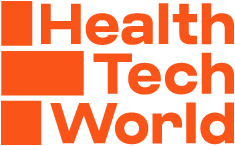
By Jasmin Hounsell, co-founder of Evolene Ltd.
After device development and regulatory clearance, it feels like it should be an easier ride for medical device developers.
However, adoption and implementation are the next big hurdles to overcome.
Clinicians are highly educated, meaning that communication needs to both inform and build trust – they will not be easily swayed by slick marketing or fluffy promises.
How does your marketing, and more specifically your communications, help?
To build trust, you need to be transparent about what exactly your device does to help and how it does it.
You also need to consistently be raising awareness of your device and company; consistency builds awareness, which enables trust.
How evidence-led marketing helps
Medical device developers, in some circles referred to as “vendors”, need to show their workings to build trust and get adoption.
In my opinion, marketing in this space isn’t the same as in other industries.
It needs to be about informing and educating your market on the utility of your device, how it should be used, and the wealth of evidence it should have behind it to show its effectiveness within its intended market. In other words, the evidence leads the marketing.
Being transparent: show your workings

Jasmin Hounsell
Vendors need to be transparent with their intended use.
A great way of doing this is ensuring the messaging on all marketing materials adheres to the IUS, over and above this, providing user guides and cheat sheets for how to effectively use the technology can help busy clinicians to understand how it fits into their workflow.
You need to highlight the evidence that has been generated.
Ensuring peer-reviewed research papers are readily accessible, and ideally, with clear summaries of how this is relevant to their intended audience is the best start.
Focus on educating, not marketing
Clinical education should be a focus for communications, which can take many forms, including educational webinars, podcasts, whitepapers, and infographics.
Video explainers with KOLs can be very impactful, offering real-world expert insights on how to properly use the device, and again leveraging peer-reviewed research.
For AI-enabled devices; discussing how an algorithm makes its predictions with explainable AI, where possible, is the gold standard.
Being clear about the diversity and makeup of their training and testing datasets.
What’s next? Implementation challenges
When it comes to implementation, one size does not fit all.
No solution in real-world settings is plug and play – despite any claims to the contrary.
A theme highlighted at many radiology and medical devices conferences this year. Again, this is particularly apparent with AI-enabled devices.
How does evidence-based marketing make implementation easier?
You need to get early market feedback to see the types of responses your report or output is getting from your intended users – and if feasible, patients. Y
ou need a strong input of user understanding when designing interactions but know that there are outliers in every situation – and planning on how to deal with those is going to be unique to each and every solution.
Evidence-led marketing: effective communications in healthcare
Marketing can be a force for good when used in conjunction with regulatory and compliance teams to ensure only the highest quality products make it to patients – but the key is making sure they actually do make it to patients and don’t get absorbed into the sea of startups that don’t get off the ground.
Our goal at Evolene is to translate scientific innovation into real-world impact for patients.
Evidence-led marketing is how we do this.
Are you building a medical device?






